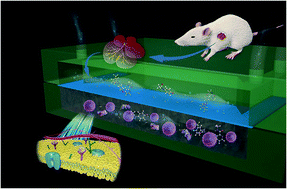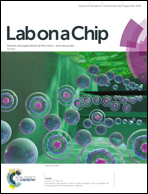Development of a biomimetic liver tumor-on-a-chip model based on decellularized liver matrix for toxicity testing†
Abstract
Cancer poses a great health threat to both developed and developing countries, and anti-cancer drugs are of important interest for improved clinical outcomes. Although tumor-on-a-chip technologies offer a feasible approach to screening drug toxicity, their capability to mimic the native tumor microenvironment (TME) is still limited. For better mimicry of the TME, we developed a biomimetic three-dimensional (3D) liver tumor-on-a-chip with the integration of essential components derived from decellularized liver matrix (DLM) with gelatin methacryloyl (GelMA) in a microfluidics-based 3D dynamic cell culture system. The biomimetic liver tumor-on-a-chip based on the integration of DLM components with GelMA, as opposed to GelMA only, had an increased capability to maintain cell viability and to enhance hepatocyte functions under flow conditions. The improved performance of the DLM–GelMA-based tumor-on-a-chip may be attributed to the provision of biochemical factors (e.g., growth factors), the preservation of scaffold proteins, and the reestablishment of biophysical cues (e.g., stiffness and shear stress) for better recapitulation of the 3D liver TME. Furthermore, this DLM–GelMA-based tumor-on-a-chip exhibited linear dose-dependent drug responses to the toxicity of acetaminophen and sorafenib. Taken together, our study demonstrates that the DLM–GelMA-based biomimetic liver tumor-on-a-chip better mimics the in vivo TME and holds great promise for a breadth of pathological and pharmacological studies.

- This article is part of the themed collection: Organ-, body- and disease-on-a-chip systems


 Please wait while we load your content...
Please wait while we load your content...